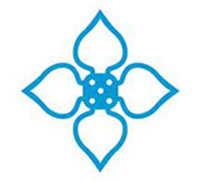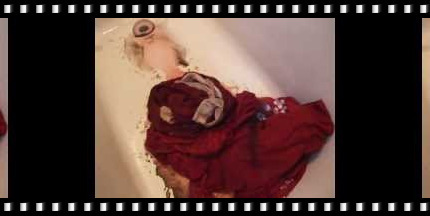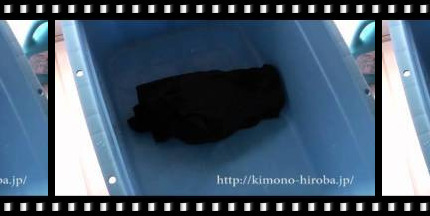How to clean your kimono or tabi from stains and dirt
Cleaning your Kimono (Kiri-arai)
Traditionally, kimonos were washed in a process called kiri arai. ① Unstitching the kimono to seperate each panel of cloth.
① Unstitching the kimono to seperate each panel of cloth.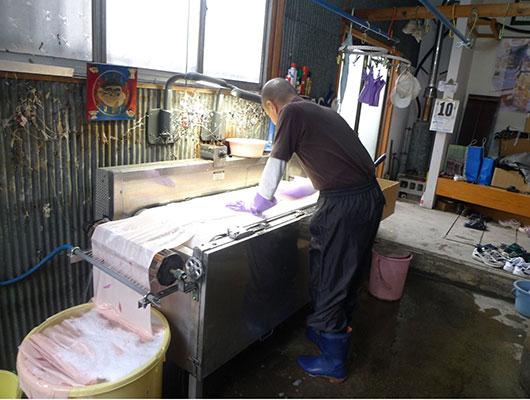 ② kimono being washed, alternative for clean shallow rivers
② kimono being washed, alternative for clean shallow rivers ③ The fabric is then stretched on a delicate frame hanging up to dry.
③ The fabric is then stretched on a delicate frame hanging up to dry. You can see how flexible rods called Shinshibari (a type of bamboo needle) are used to stretch the fabric. The fabric is held by wooden clamps at each end.
You can see how flexible rods called Shinshibari (a type of bamboo needle) are used to stretch the fabric. The fabric is held by wooden clamps at each end.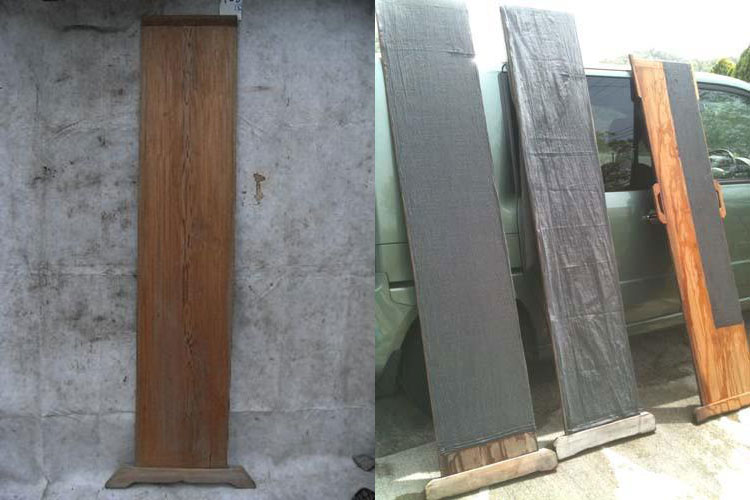 Sometimes the textile is stretched out on very long boards (note, from the front hem all the way up and over the shoulder, then back down to the back hem is one very long piece of fabric, as kimonos have no shoulder seams).
Sometimes the textile is stretched out on very long boards (note, from the front hem all the way up and over the shoulder, then back down to the back hem is one very long piece of fabric, as kimonos have no shoulder seams).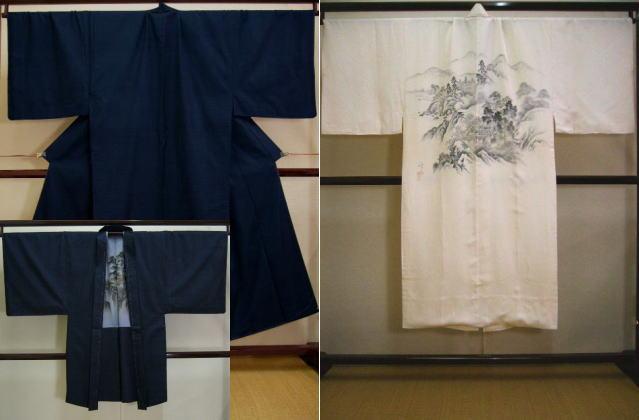 ④ Once washed and dried, the kimono would be remade,
④ Once washed and dried, the kimono would be remade, ⑤ or rolled into araihari (洗い張り) bundles and reused.
⑤ or rolled into araihari (洗い張り) bundles and reused.The original Japanese page where some of above images came from can be found at Kimono cleaners, Darmaya in Hiratsuka and Wafuku, about kimono
Naturally, cleaning this way is a pretty expensive process and finding such a store can be a daunting task, even in Japan. For the cleaning fee, think about $80-$150 depending on the type of kimono, being padded and what kind of cleaning you require.
Price lists of Kimono cleaners Darmaya in Hiratsuka(jpn) or Nasu cleaning Tokyo (eng).
So what to do, luckily, we are talking about Kimono for Men, kimono's that don't have beautiful designs painted on them by hand, designs that probably (!) don't smear or fade when handled with a little bit of soap.
If the fabric is silk, it is advisable to send it to the dry cleaner or a kimono cleaner, but make sure that the dry cleaning understands the delicacy of the material an decorations.
A promising site that seems to have a lot of good advice about silk handling is TexereSilk.
If you want a more enjoyfull and informative reading about washing kimono's, check out John's attic's article Kimono Care 1 – Washing Kimono (Arai-hari).

Washing the Kimono yourself without unstitching (maru-arai)
When your kimono cloths get stained you can (carefully) try to clean the cloth yourself, but be warned, many things can go wrong. The chance of getting a stain out of a vintage kimono without damaging it, is very low.If by chance you have a professional kimono cleaning in the neighborhood and it is a pricey kimono, please go to the shop, if only just to ask for advice.
In other words, don't get your kimono dirty !
Warnings about cleaning the different materials:
- Synthetic fibers
Check the clothing tag for washing instructions, if there is an indication that the washing machine OK, let's wash with care. (probably 30 degrees, 30 minutes with hand-wash detergent) - Silk
When put in water, because the variable fabrics and colors, you can either use the detergent of silk OK, let's ask the shop. Sponging spots can also leave water marks. Any silk: Once it has been turned yellow by exposure to bleach, it can not be whitened. It will always be yellow. It is a chemical reaction that can not be undone. - Cotton
May lose color by dye, it shrinks a little when put in water. Probably best not to wash the kimono. - Hemp
Discoloration or shrinkage is almost the same as the cotton, but when you wash so conspicuous wrinkles, Be careful when you hang out.
- Material can shrink
Clothes may shrink significantly depending on the fabric, once shrunk the cloths won't shrink any further. - Discoloration may occur
Clothes may be discolored dipped in water, and water color changes much. - Wrinkles
Are very hard to get rid of, when washed make sure the cloths are hanged carefully and straight so wrinkles won't appear. - Tearing
After many years kimono cloth may get thinner and may be torn as a result. - Dirt, let it dry and brush it away in the direction of the grain (though not recommended when the fabric is weak).
- (vegetable) Oil, add a little bit dish cleaning soap to the spot, wait for about 15 minutes and put it in the washer at 30 degrees (Celsius) or wash the affected parts selectively by hand in lukewarm water.
- Never wring the fabric, put it on a kimono hanger and let is dry making sure the sun won't reach that hanging spot. probably not a good idea to use the dryer also.
- You can dry iron you kimono at low temperature (140-160 degrees), with a thin, white piece of cloth between the iron and the fabric. Use a thin piece of paper between iron and embroidering, gilts and crests. Do not use steam, as this may stain the kimono.
Washing the kimomo! use at your own risk !
Unfortunately, lined kimono's are hard wash yourself. The kimono shrinks and extends beyond the lining, it will look terrible.If you have hard water, you may want to add a tablespoon of borax to the water prior to washing.
Just to prepare you, an example of a "Disaster kimono washing"
1. Washing the kimono by hand
① Fill the tub with old water, filling to the brim and keep water running that it keeps slowly overflowing.
② Before putting in the detergent, gently wash by hand. Be careful this time never trodden or scrubbing!
③ Turn off the water flow and put in a very mild detergent such as Woolite or Dr. Bronner’s Baby Soap, this soap will help preserve the garment’s natural oils also make sure the detergent does not contain bleach.).
④ And once again, gently wash by hand.
⑤ Turn the water flow on so that the water becomes clean again and rinse the item until all soap residue has been removed. (Add a few drops of hair conditioner to the rinse water to keep the silk soft and flexible.)
To keep silk from yellowing, add ½ cup of vinegar to the rinse water.
⑥ Press the water out of the fabric by rolling it in a towel. Do not twist or wring, as this will damage the fabric ⑦ Hang the kimono (not in the sun) on a kimono hanger to dry completely.
⑧ Iron only when absolutely necessary. Use a cool iron with a press cloth between the iron and the fabric.
2. Washing the kimono in a washing machine
 Check for any symbols, if it says no washing machine then it's better to give up this approach and check for other symbols that tell what can be alternatively used.
Check for any symbols, if it says no washing machine then it's better to give up this approach and check for other symbols that tell what can be alternatively used.But basically you can wash unlined silk and synthetic in the washing machine.
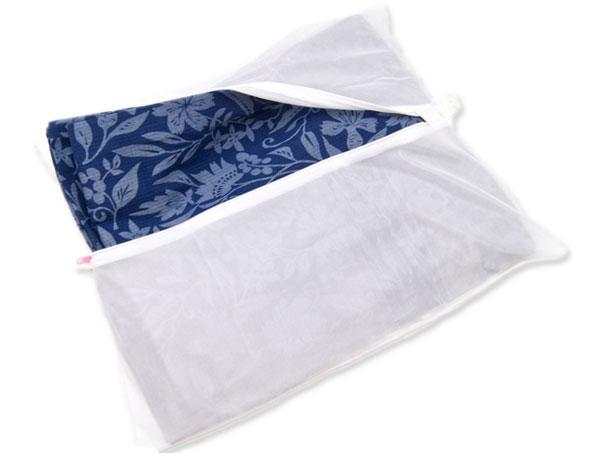 Fold the kimono so that it can be placed in a kimono laundry net to preventing friction that can damage the fabric.
Fold the kimono so that it can be placed in a kimono laundry net to preventing friction that can damage the fabric. Use a non bleach (chlorine or oxygen) detergent that 'offers' hand-wash mode.
Use a non bleach (chlorine or oxygen) detergent that 'offers' hand-wash mode. Run the washing machine on 30 degrees.
Run the washing machine on 30 degrees.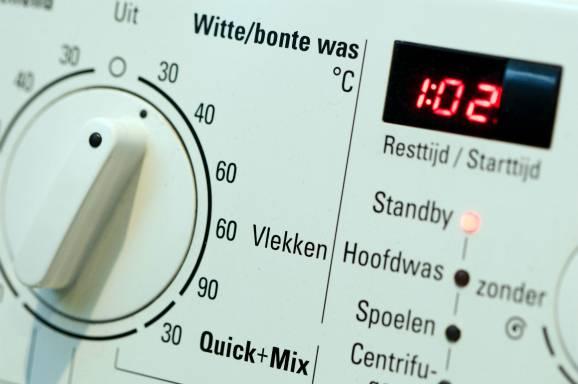 Probably you can run a short dehydration cycle (to just one minute ?)
Probably you can run a short dehydration cycle (to just one minute ?) Hang the kimono in the shade in a well ventilated room on a kimono hanger to dry completely.
Hang the kimono in the shade in a well ventilated room on a kimono hanger to dry completely.Wrinkles stretch out wet, by pulling by hand
 After the kimono has dried and there are still wrinkels left, use an iron on low heat setting (140-160 degrees) to sort them out.
After the kimono has dried and there are still wrinkels left, use an iron on low heat setting (140-160 degrees) to sort them out.Don't forget the protective paper between kimono and iron.

The Tabi that you wear with a kimono, how do you clean it ?
There are several stories out on the internet about cleaning tabi, since i have not yet cleaned them myself very often i will give the solutions other people found.(for cotton tabi socks)
Hand wash gentle in cold water or machine wash (but put them in a laundry bag first so the kohaze can't catch on anything else) at cold or low temperature.
Hang dry them (machine drying may increase the chance of shrinking) taking care to arrange them neatly by hooking the kohaze into the loops to give them shape as they dry. Another option is to put them on and let them dry on your feet to make sure the right shape and size remains. Dry them in the shade.
(for polyster tabi socks)
Add them together in a laundy bag with the other white laundry at 60 degrees (or keep it at 30 degrees ?) ?
Other suggestions that are made :
- Using a laundry liquid or powder with an optical brightener in it will make them look super white.
- Cotton can easily handle boiling water so putting the tabi for some while in boiling water with a small bit of detergent could give pure white tabi as a result.
- Another, more labour intenstive is to use travel-wash and a nail brush. It takes quite a lot of scrubbing to get everything out, but it works.
- Or just add them together with the other white laundry at 60 degrees.
- Stain remover tablets worked for me. I think the brand is "Vanish" though they would have to be pretty dirty to qualify for that kind of treatment
- Dyed Tabi Shoes uses an agent to avoid color loss but the color will gradually fade during repeated washings.

Stain removal
Here are some suggestions of removing certain types of stains from a Silk garment.I personally haven't tried these suggestions (knocks on wood) so use it on your own risk.
Use lemon juice or vinegar to spot clean, but test an inconspicuous area first to test for colorfastness.
 Stain removal tip : Red wine stain on silk
Stain removal tip : Red wine stain on silkGarments in silk cannot be treated with salt or white wine, but with corn or potato flour.
Against remaining traces of red wine help some diluted ammonia, methylated spirit or Insecticidal soap.
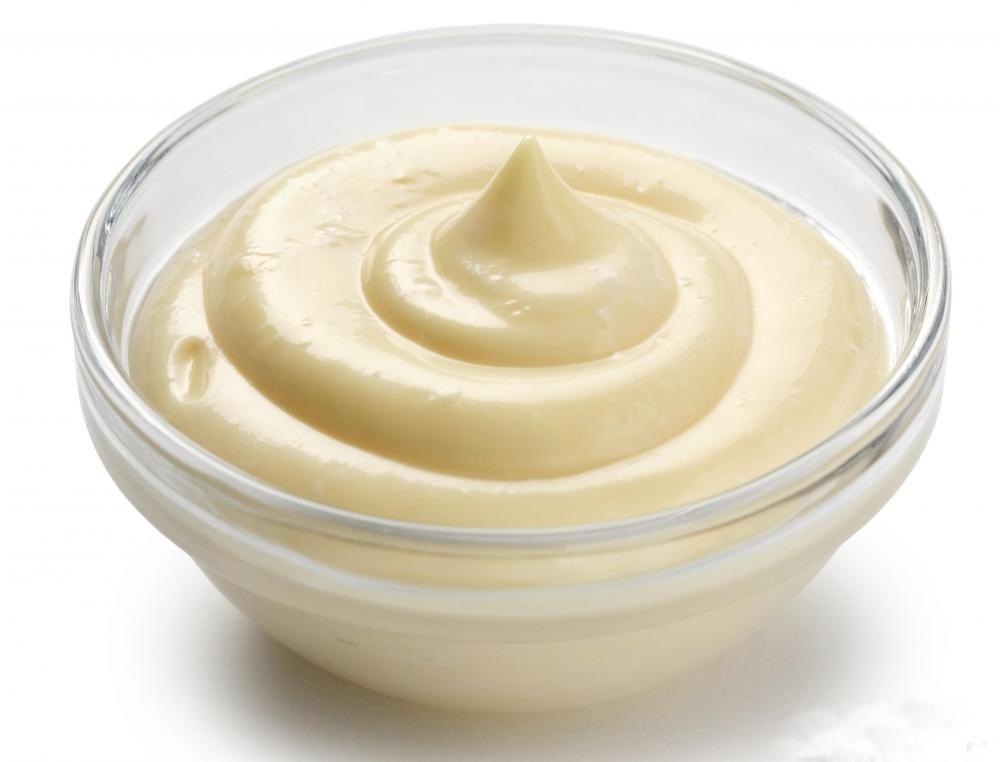
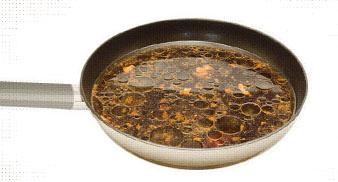




Some video's I have found on washing the Kimono
(though in Japanese but hopefully the video itself will give enough clues)
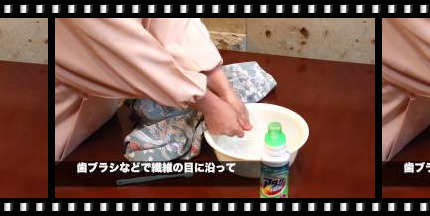
第1回 基本的な洗い
1) The basic wash

第2回 お洗濯の前に
2) Before you wash
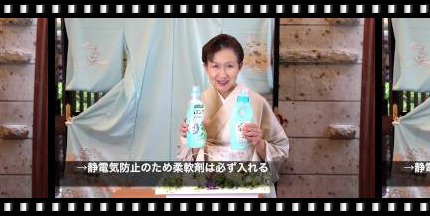
第3回 洗剤の種類
3) Type of detergent

第4回 部分洗い
4) Partial wash

第5回 長襦袢の洗い方
5) How to wash a nagajuban
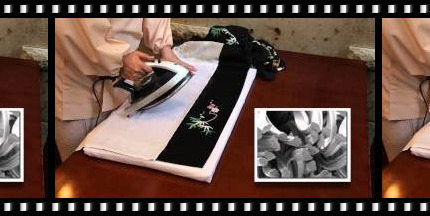
第6回 干し方とアイロン仕上け
6) Drying and finishing ironing
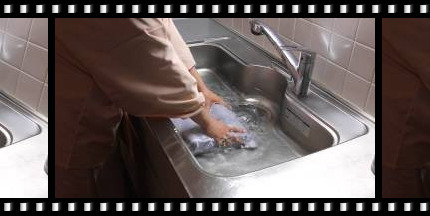
第7回 専用洗濯ネットの使い方
7) How to use a dedicated laundry net
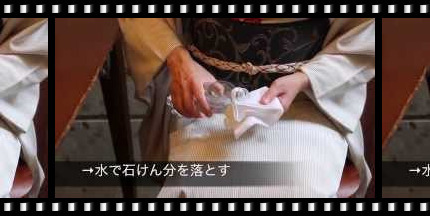
第8回 応急処置
8) First-aid treatment
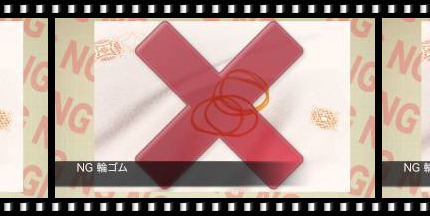
第9回 やってはいけないNG集
9) NG collection that should not be done
